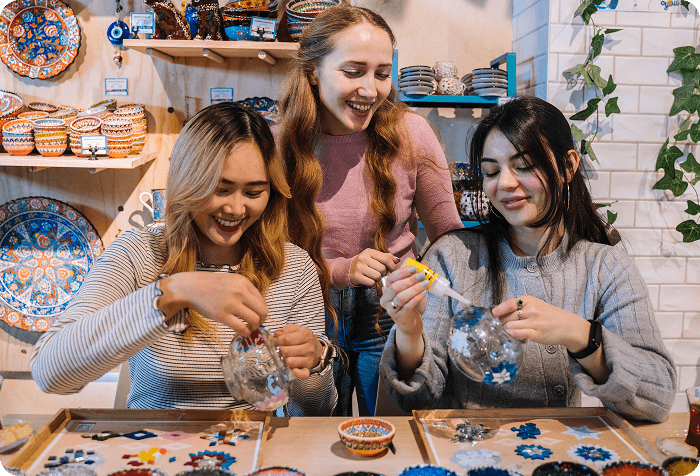In this story:
Unlock the secrets of creating stunning flower arrangements for your home at uplifting floristry classes in Melbourne! You deserve to have something beautiful, vibrant and fragrant on your desk while you work from home, so why not boost your serotonin levels and make floristry a new 2025 hobby? These indoor activities will not only bring joy to your day but will also ignite your creativity, making it one of the most rewarding things to do in Melbourne. Imagine yourself crafting your very own flower crowns, intricate flower wreaths, elegant hand-tied posies or even larger vase arrangements. There's no doubt that learning the art of floristry is a fulfilling way to spend your time in Melbourne!
The sight of a pretty and scented bunch of flowers in your home can make you feel more in touch with the beauty of nature and even brighten your day. But you might feel an expensive arrangement from the florist every week is a bit much, so why not create your own? When you’re entirely focused on placing beautiful flowers in an interesting and pleasing way, flower arranging becomes a mindfulness activity that can add to your wellbeing.
The local florist or flower market can provide you with some flowers that you may not be growing yourself. Visiting the flower markets is a great activity to do in Melbourne and there are some, including Footscray and Monbulk, that are open to the public. If you’re looking for indoor activities in Melbourne on a rainy day, the undercover markets can be a perfect destination. Do check before going, as some are purely wholesale markets for florists.
If you’re looking for some tips before you start, there is an abundance of floristry courses in Melbourne for you to attend!
Top 5 Best Floristry Classes in Melbourne:
-
Floristry design workshop for beginners with Bloomin' Marvellous
-
Introduction to Ikebana Class with Shoso Shimbo
-
Preserved and Dried Flower Bouquet Class with Bloomin' Marvellous
-
Floristry Class: Spring Hand-Tied Flower Bouquet with Botaniculture
-
Sip and Create Floristry Workshop with Bloomin' Marvellous
1. First, raid your backyard!

Before you duck off to the florist, check your garden and if you have nice neighbours, theirs too! Depending on the season, you might find some hardy Australian natives like proteas, wattle or even a waratah. There’s nothing like a native flower arrangement in your home to make you feel more connected with the Australian landscape! If you have birds of paradise growing in your garden, you could use one or two - they’re a strong angular shape but can work nicely if you soften them with a spray of spider orchids or a strong native variety like leucadendrons or a small waratah. If you don’t manage to find a native in your garden, local florists often stock blue thistle flowers, leucadendrons, wax flowers, and for a glorious short time in Spring, even flannel flowers.
You’ll also need some greenery. Easily plucked from your garden are viburnum, buxus from a hedge or monstera leaves (large tear-shaped leaves with Swiss cheese holes). For a structural green touch, you could cut a few succulents. In August and September, try to get your hands on a magnolia branch, which adds a lovely contrasting colour, as the underside of the leaves are brown whilst the top of the leaves is a glossy dark green.
2. Get prepared with some tools
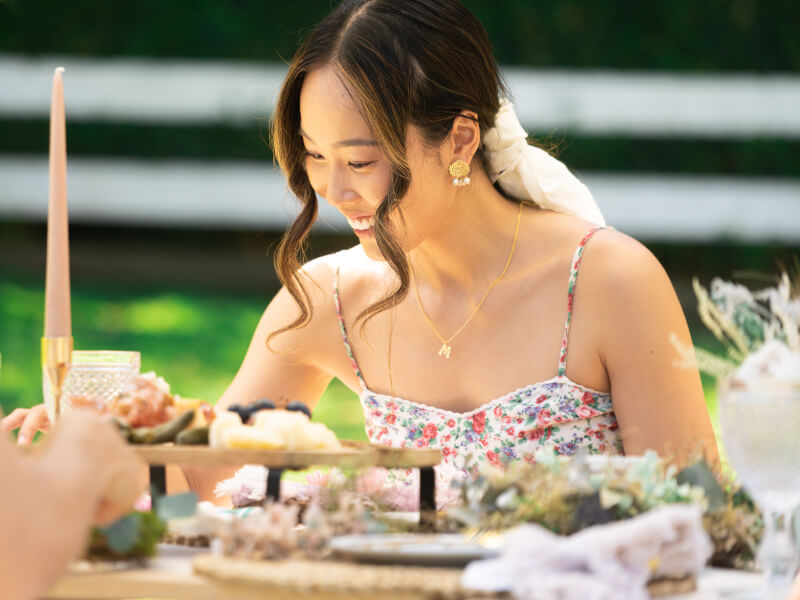
Floral shears or florist snips are best, but garden secateurs will also do quite well. You’re going to want to cut all the stems of your flowers and foliage on an angle at the bottom because this creates the largest surface area to absorb the water and gives a fresh new cut to the stem as well. If you’re using roses, you may want to also invest in a rose dethorner - it’s a nifty little tool that strips the stems and will save your fingers from all those thorn pricks!
Another useful addition is floral wire, which is handy for top-heavy flowers with dainty stems, like gerberas. You can wrap the wire around the stem and poke it gently into the bottom of the flower head to support it.
3. Choose a vase
This is surprisingly a more important step than you might think. Top tip: Size matters! If it’s too tall and narrow, your flowers might end up standing straight up in a column, which is quite a formal style. If you’re aiming for something more casual and natural, look for something wider and shorter (not too short, because then all your flowers might end up drooping over the edge). Choose something in the middle and you’ll have a good chance of creating something you’re super happy with.
New to floristry and think you’d benefit from a hands-on workshop? Learn how to arrange tall seasonal blooms in a vase with Jemina from Bloomin’ Marvellous at her Malvern East floristry studio.
4. Get help to make the flowers stand where you want them to

Here you have several options to support your flowers to stay in place. A little piece of chicken wire, curled up into a ball shape will present you with holes that you can poke each stem into. A good little hack if you don’t have chicken wire is to use a plastic basket container that berries come in from the supermarket. Turn it upside down, place it in the bottom of the vase and use the holes in the bottom to thread the flower stems into. You can even snip the holes bigger if you need to.
Another tactic is to use tape to make a grid across the top of the vase or floral foam to stick the flowers into, but be mindful that these are less environmentally friendly options. However, there are some newer floral foam products on the market which are biodegradable, so check carefully. Vintage flower frogs (metal, ceramic or glass) can be found in second-hand stores or online if you’re lucky!
Looking for unique things to do in Melbourne where you can be surrounded by beautiful flowers? Discover Ikebana, the art of Japanese flower arranging here.
5. Choose your flowers
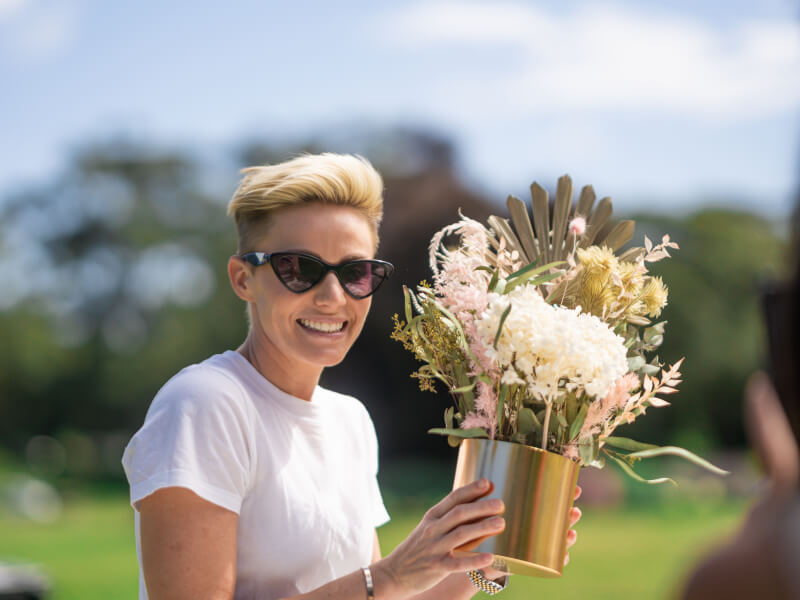
The most sustainable and affordable choices are flowers that are grown as close to your home as possible. To work synergistically with nature, choose flowers that are in season in Australia. For visual interest and balance, try to choose a variety of textures, shapes and colours. You’ll need four main types. Firstly, longer branches for the frame, like blossom tree branches (almond/cherry/apple) or larger leaves. Larger blooms like hydrangeas, peonies and dahlias then provide the foundation of your arrangement. They fill a large space but aren’t the showiest. Then you want to sprinkle in some focal highlights, such as ranunculus, tulips, anemones, roses or freesias. These are the stars of the show, the ones you want to stand out the most. Then you’ll add what some florists call “floaters” - lighter, more delicate varieties such as cosmos, poppies, daffodils and sweet peas.
6. Get ready to play
First, take a deep breath. This is the really good bit! Don’t worry that you’re not a bonafide qualified florist. Make sure you never feel stressed about it—just play around and enjoy it! If you don’t like how it’s looking, simply pull the flowers out and start again, or just rearrange a few. It’s important to step back regularly and view your flower arrangement from all sides so you see how it’s working. Your perspective will be very different when you view your arrangement from a distance.
Flowers and fun truly go together! If you’re looking for classy hens party ideas that you and your favourite ladies will love, check out this sip and create floristry workshop and socialise as you arrange flowers.
7. Arrange your flowers
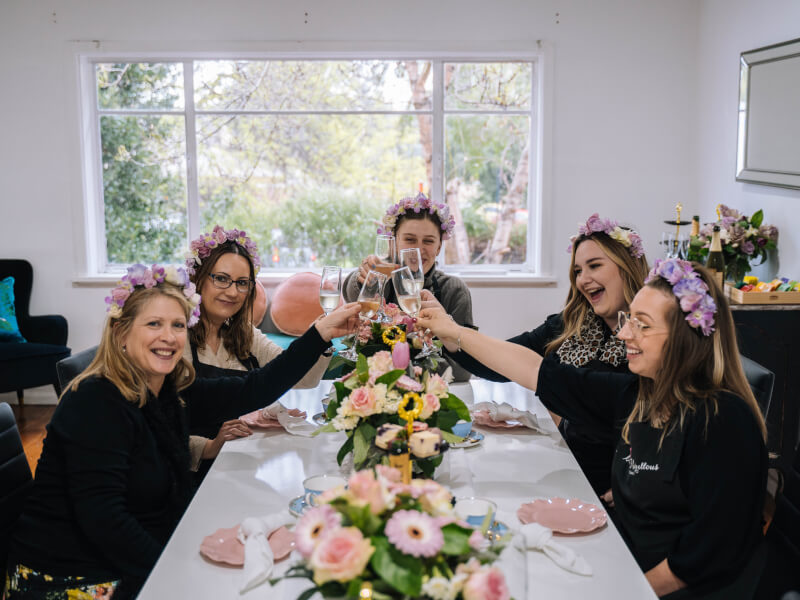
Start by spreading your flowers and foliage out in a line across a table, each type grouped together. If you have chosen big branches or anything with a long stem, start placing those unevenly in your vase. Leave some tall and cut some shorter, so there’s a nice imbalance to the arrangement. Use your intuition. Then add the greenery in the same way. A nice tip is to use uneven numbers of each variety - like three or five green leaves, but not two or four because that can create an unwelcome symmetry.
Then place your biggest blooms quite low. They’re going to act as a “bed” for your arrangement. Place your focal flowers slightly higher, letting them shine. Finally, add your smallest flowers, which act as gentle highlights throughout the scene.
Tweak and move things until you’re happy with it and then enjoy the swell of pride in your handmade flower arrangement! And if you’ve been hooked by the flower-loving bug, you might want to learn how the pros do it and join some floristry classes in Melbourne!
8. Embrace the imperfections
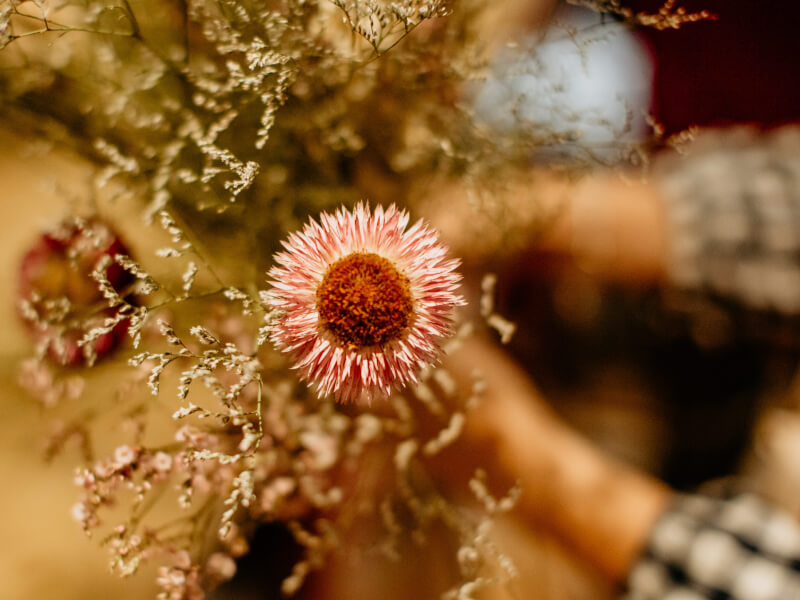
One of the joys of creating your own flower arrangement is the opportunity to embrace the imperfections. Flowers in nature aren't always perfectly symmetrical or uniform in size, and your arrangement doesn't have to be either. In fact, it's the subtle irregularities and unique quirks of each bloom that can give your creation its character and charm. So, don't worry too much about achieving absolute symmetry or precision. Let your artistic instincts guide you, and remember that nature itself is beautifully imperfect. Your flower arrangement will be a reflection of your creativity and a celebration of nature's diversity. And hopefully, now you feel relaxed and calm after learning how to make a flower arrangement for your home. You can get that same feeling and more at one of our many floristry courses in Melbourne.








































